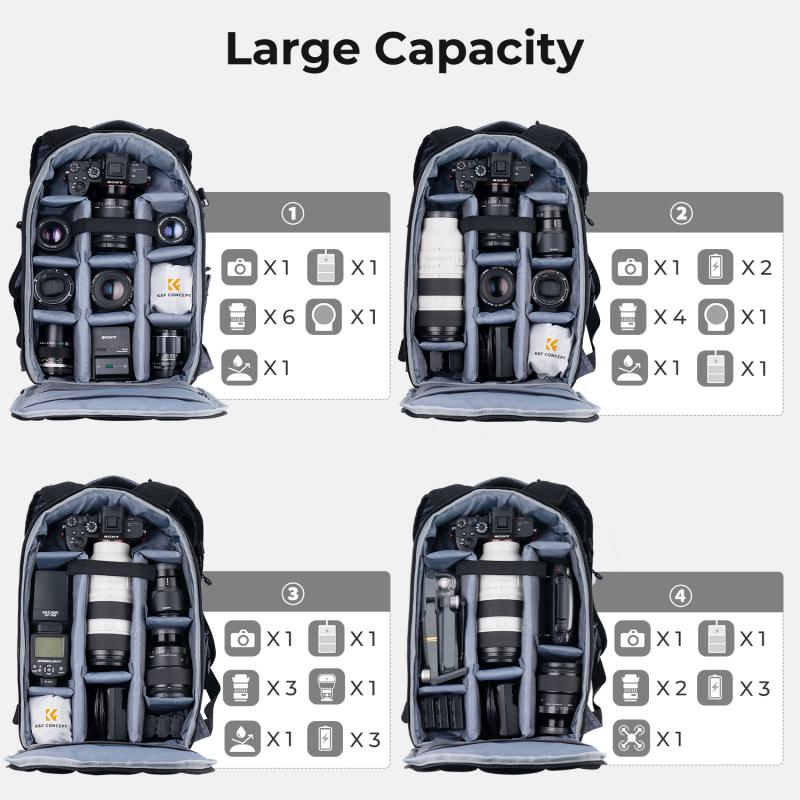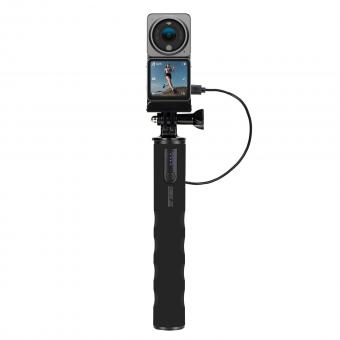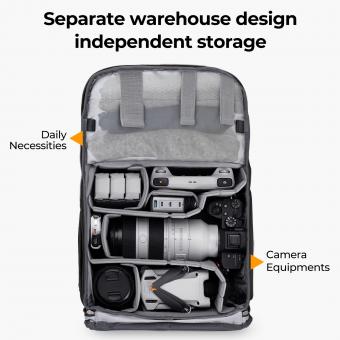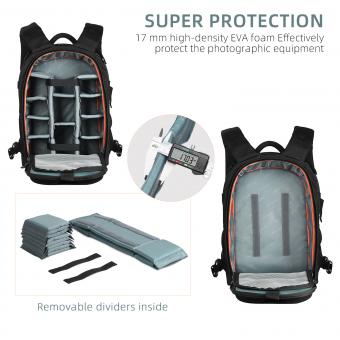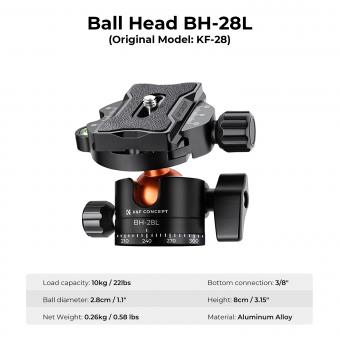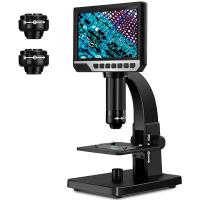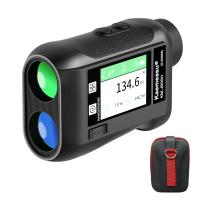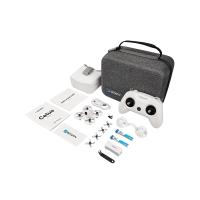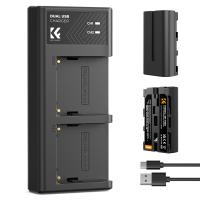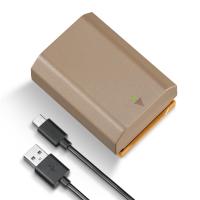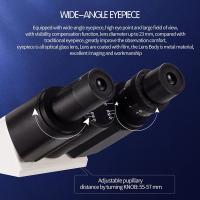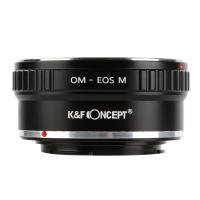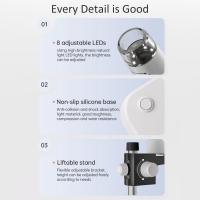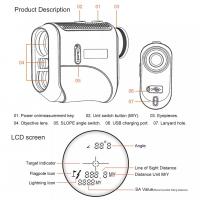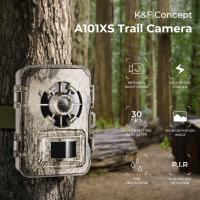How To Put Dslr Camera In Bag ?
To put a DSLR camera in a bag, first ensure that the camera is turned off and any attached lenses are securely fastened. Place the camera in the bag with the lens facing downwards to prevent any potential damage. Make sure the bag has sufficient padding and compartments to protect the camera from bumps and scratches. Additionally, it is advisable to store the camera in a bag specifically designed for DSLR cameras to provide optimal protection and organization for accessories such as batteries, memory cards, and cables.
1、 Camera Bag Types and Features
When it comes to putting a DSLR camera in a bag, there are a few key considerations to keep in mind. Camera bags come in various types and feature different compartments and designs to accommodate your camera and its accessories. Here's a guide on how to put your DSLR camera in a bag effectively:
1. Choose the right camera bag: There are several types of camera bags available, including backpacks, shoulder bags, and sling bags. Consider your needs and preferences to select the most suitable option. Backpacks provide ample space for multiple lenses and accessories, while shoulder bags offer quick access to your camera. Sling bags combine the benefits of both.
2. Organize your gear: Before placing your DSLR camera in the bag, organize your gear. Remove any lens attachments, filters, or other accessories and place them in their designated compartments or pockets within the bag. This will ensure that everything is easily accessible and protected.
3. Secure your camera: When placing your DSLR camera in the bag, make sure it is securely fastened. Most camera bags have adjustable dividers or foam inserts that can be customized to fit your camera snugly. This prevents any movement or potential damage during transportation.
4. Protect your camera: Consider using a camera wrap or a protective case for your DSLR camera. This provides an extra layer of protection against bumps and scratches. Additionally, invest in a bag with padded walls or compartments to cushion your camera from any impact.
5. Utilize additional pockets: Camera bags often come with additional pockets and compartments for storing memory cards, batteries, cables, and other accessories. Utilize these pockets to keep your gear organized and easily accessible.
In recent years, camera bag manufacturers have started incorporating innovative features to cater to the evolving needs of photographers. Some bags now come with built-in rain covers to protect your gear in adverse weather conditions. Others have dedicated laptop compartments, allowing you to carry your laptop or tablet along with your camera gear. Additionally, some bags offer customizable modular systems, allowing you to rearrange the interior compartments to suit your specific equipment.
Remember, always handle your camera with care and ensure it is properly secured in the bag before transporting it. By following these guidelines and considering the latest features available, you can safely and efficiently put your DSLR camera in a bag.
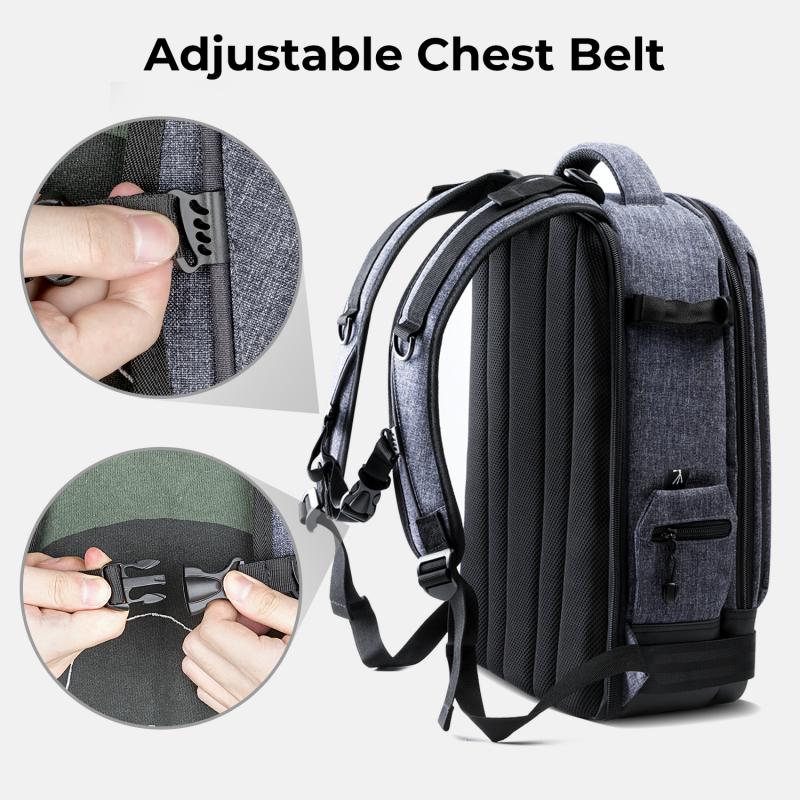
2、 Proper Camera Placement and Organization
Proper camera placement and organization are essential when it comes to storing your DSLR camera in a bag. By following a few simple steps, you can ensure that your camera is protected and easily accessible whenever you need it.
1. Remove any accessories: Before placing your DSLR camera in the bag, remove any accessories such as lenses, filters, or flash units. This will prevent them from getting damaged or causing any unnecessary pressure on the camera body.
2. Use a padded camera insert: Invest in a padded camera insert or dividers specifically designed for camera bags. These inserts provide extra protection and help keep your camera secure in the bag. Place the insert at the bottom of the bag.
3. Position the camera body: Lay the camera body flat on top of the padded insert, with the lens facing up. This helps prevent any accidental damage to the lens or camera controls.
4. Secure the camera: If your camera has a strap, make sure to secure it around the camera body or attach it to a designated strap holder inside the bag. This will prevent the camera from moving around and potentially getting scratched.
5. Arrange additional lenses: If you have multiple lenses, place them in individual lens pouches or wrap them in lens cloths before placing them in the bag. Position them vertically alongside the camera body, ensuring they are snug and won't shift during transportation.
6. Organize other accessories: Use the bag's compartments or pockets to store other accessories such as memory cards, batteries, chargers, and cables. Keep them separate from the camera and lenses to avoid any potential damage.
7. Close the bag securely: Once everything is properly placed, close the bag securely to protect your gear from dust, moisture, and accidental bumps.
It's important to note that the latest point of view in camera bag organization emphasizes the need for lightweight and compact solutions. Many photographers now prefer smaller camera bags that can accommodate mirrorless cameras or compact DSLRs, as they offer similar image quality with reduced weight and size. Additionally, modular camera bag systems are gaining popularity, allowing photographers to customize the bag's interior layout according to their specific needs.
Remember, proper camera placement and organization not only protect your gear but also make it easier to find and access everything quickly. By following these steps and considering the latest trends in camera bag design, you can ensure that your DSLR camera is well-protected and ready for any photographic adventure.
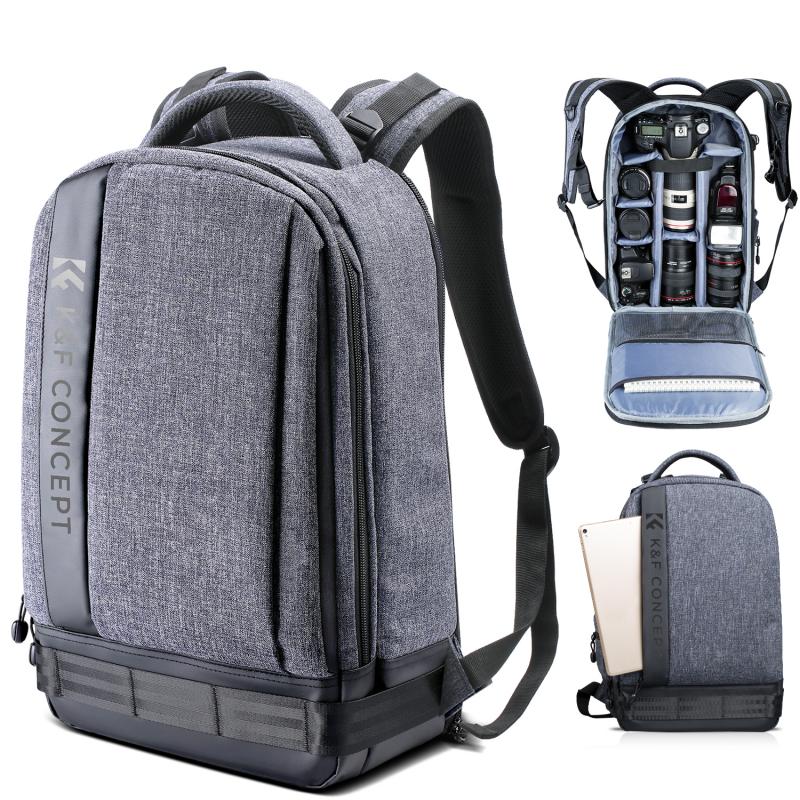
3、 Protecting the Camera and Lens from Damage
Protecting your DSLR camera and lens from damage is crucial to ensure their longevity and optimal performance. When it comes to storing your camera in a bag, there are a few key steps you can follow to ensure its safety.
1. Choose a suitable bag: Invest in a camera bag that is specifically designed to accommodate DSLR cameras. Look for a bag with padded compartments and dividers to provide cushioning and prevent any potential impact damage. Additionally, consider a bag with weather-resistant material to protect your gear from moisture and dust.
2. Remove the lens: Before placing your camera in the bag, it is advisable to detach the lens. This reduces the risk of any accidental bumps or pressure on the lens mount, which can cause damage. Place the lens in a separate padded compartment or wrap it in a lens pouch for added protection.
3. Secure the camera: Once the lens is removed, securely fasten the camera body in the bag's main compartment. Ensure that it is snugly fit and does not move around. If there is any extra space, use padded dividers or foam inserts to fill the gaps and prevent any potential impact damage.
4. Organize accessories: Keep your camera accessories, such as extra batteries, memory cards, and cables, in separate compartments or pockets within the bag. This helps to prevent them from scratching or damaging the camera body or lens.
5. Consider a camera wrap: For added protection, you can use a camera wrap or a protective sleeve to cover the camera body. This provides an extra layer of cushioning and safeguards against any potential scratches or minor impacts.
6. Handle with care: When placing the bag down or carrying it, be mindful of any sudden movements or impacts that could potentially damage the camera. Always handle the bag with care and avoid placing heavy objects on top of it.
In conclusion, protecting your DSLR camera and lens from damage while storing them in a bag is essential. By following these steps and investing in a suitable camera bag, you can ensure the safety and longevity of your gear.
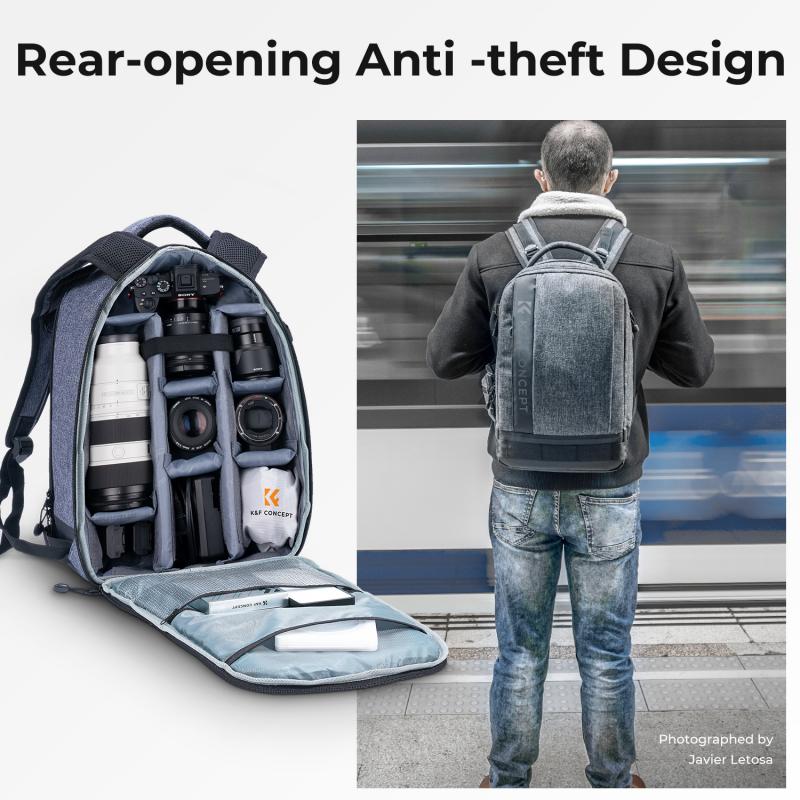
4、 Securing Accessories and Extra Equipment
Securing accessories and extra equipment is an essential aspect of packing your DSLR camera in a bag. Here are some steps to ensure that your camera and its accessories are safely stored:
1. Remove the lens: Start by removing the lens from your DSLR camera. This will help prevent any damage to the lens or camera body during transportation. Place the lens in a protective case or wrap it in a soft cloth to avoid scratches.
2. Organize cables and chargers: Neatly coil any cables, such as USB cords or battery chargers, and secure them with twist ties or cable organizers. This will prevent them from tangling or getting damaged.
3. Use padded dividers: Most camera bags come with padded dividers that can be rearranged to fit your specific equipment. Place the camera body in the center of the bag and use the dividers to create separate compartments for lenses, flashes, and other accessories. This will help prevent them from knocking against each other and causing damage.
4. Utilize lens pouches: If your camera bag doesn't have built-in lens compartments, consider using individual lens pouches. These pouches provide extra protection and can be easily placed in the bag's main compartment or attached to the bag's exterior.
5. Secure memory cards: Memory cards are small and can easily get lost or damaged. Store them in a dedicated memory card case or wallet to keep them organized and protected.
6. Consider a waterproof bag: If you plan to shoot in challenging weather conditions or near water, investing in a waterproof camera bag can provide an extra layer of protection for your equipment.
7. Lock the bag: Some camera bags come with built-in locks or have provisions for adding a padlock. This can help prevent theft and keep your gear secure.
Remember to always check the manufacturer's instructions for specific storage recommendations for your camera and accessories. Additionally, it's a good idea to periodically review and update your camera bag setup to accommodate any new equipment or changes in your shooting style.
